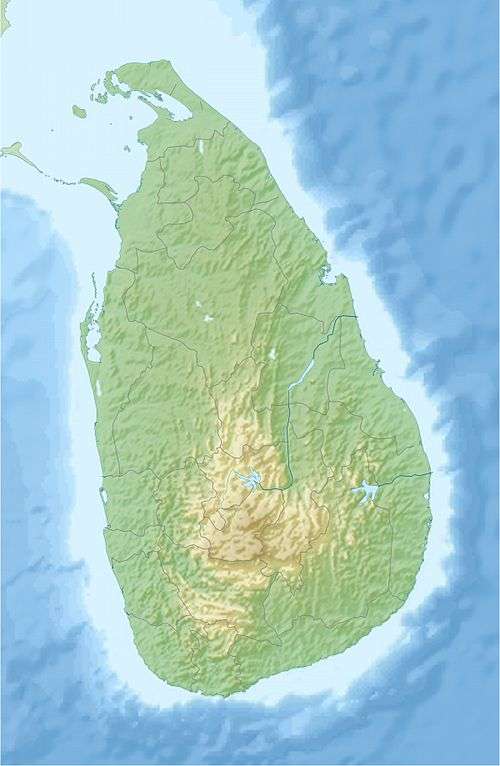Udawalawe Elephant Transit Home
| Udawalawe Elephant Transit Home | |
|---|---|
 Location of Udawalawe Elephant Transit Home | |
| Location | Sabaragamuwa Province, Sri Lanka |
| Nearest city | Embilipitiya |
| Coordinates | 6°28′00″N 80°53′00″E / 6.46667°N 80.88333°ECoordinates: 6°28′00″N 80°53′00″E / 6.46667°N 80.88333°E |
| Established | 1995[1] |
| Governing body | Department of Wildlife Conservation |
The Udawalawe Elephant Transfer Home is a facility within Udawalawe National Park in Sri Lanka that was established in 1995 by the Sri Lanka Department of Wildlife Conservation. Its primary objective is to rehabilitate orphaned elephant calves for ultimate release back into the wild.
History
Sri Lankan elephants (Elephas maximus maximus) are an endangered species and their survival in their natural habitats is threatened due to human activities. Elephants in the wild are constantly being killed, and many elephant calves become orphaned. In order to support these orphaned elephants, the Department of Wildlife Conservation set up the Elephant Transit Home within Udawalawe National Park with help from the Born Free Foundation.[2] The facility was established under the 29th Amendment to the Fauna and Flora Protection Ordinance Part II.[3]
As of 8 February 2009, 39 orphaned elephant calves were being looked after.[4] The elephant calves are released to the jungle after they become strong enough to survive in their natural habitats. As of 2008, sixty-five elephants had been released to the jungle.[5]
Facilities and care
The main objective of this facility is rehabilitation of orphaned baby elephants to ultimately release them back into their natural habitat. Up to three elephants per week are killed in Sri Lanka due to conflicts with humans, often leaving behind orphan calves.[1] The elephants are kept at part of the Udawalawe National Park to maintain familiarity with their habitat, but have access to both food and medical care.
All care at the facility is by trained staff, and efforts are made to minimize contact between elephants and humans to keep the elephants from becoming acclimated to humans. Although visitors can watch the elephants being fed, they are not allowed to touch or otherwise interact with them.
Foster parent scheme
Since caring for elephants is expensive, the Department of Wildlife Conservation created a foster-parent program to help pay for the required food and medicine. Individuals and groups that foster an elephant are entitled to certain privileges, including:[5]
- Naming the elephant.
- Taking photographs of the elephant.
- A free circuit bungalow in Udawalawe National Park for two days per year.
- Publicity for the foster-parent
- The foster-parent and elephant's name displayed at the Elephant Transfer House and the head office of the department.
- Involvement in the release when the elephant is returned to the wild.
Release program
While at the center, contact with humans is deliberately minimized so that the elephants will not acclimate to humans. Elephant calves are looked after until they are 5 years old, when they are released into the wild. The elephants are fitted with radio collars to help wildlife officials monitor their movements, behavior and progress. To erase any residual human smell and help ensure their acceptance among their wild cousins, the elephants are given a bath in diluted elephant dung before being released.
See also
References
- 1 2 "Elephant foster parents in Sri Lanka". iucn.org. IUCN. 15 January 2010. Archived from the original on 13 November 2012.
- ↑ "Elephant Transit Home, Sri Lanka". bornfree.org.uk. Born Free. Archived from the original on 29 September 2011.
- ↑ Azwer, Maryam (15 February 2009). "The politics surrounding baby elephants". thesundayleader.lk. The Sunday Leader. Archived from the original on 5 June 2012.
- ↑ "New jumbo transit home". sundayobserver.lk. The Sunday Observer. 8 February 2009. Archived from the original on 2 October 2012.
- 1 2 "Foster Parent Scheme for Baby Elephants". elephantsinsrilanka.com. Eco Team. Archived from the original on 22 October 2012.